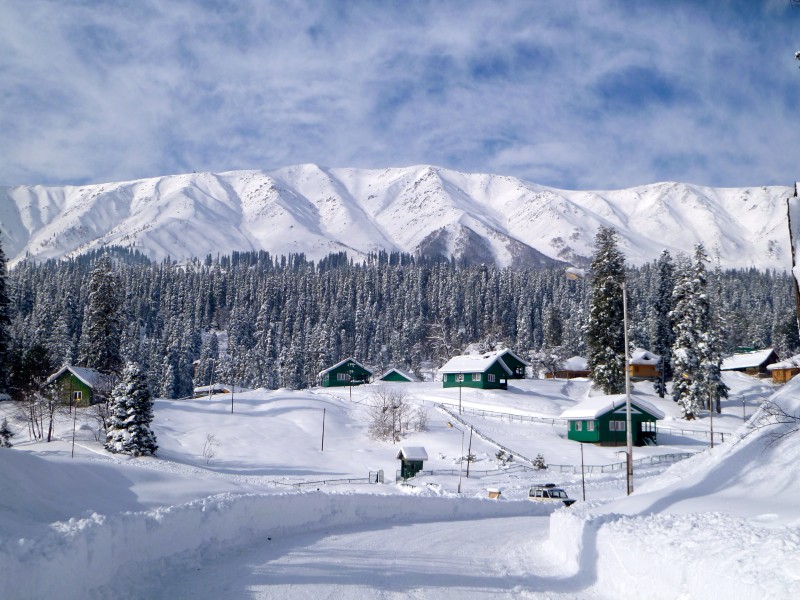(The most important flood
prevention measure of dredging the river Jhelum and the Spill over Channel
seems illusive as ever as one does not see any physical progress on the
ground!)

After the
disastrous flood of 2014, the most important task of the government was to
initiate immediate flood prevention measures. The top most measure was the
dredging of the River Jhelum and the flood spill over channel so as to increase
the water holding capacity of the both. Along with this first step, the other
important measure was to strengthen the River and Flood Channel embankments
which had been breached in many places during the last flood. During the Governor
rule some measures were initiated. A Kolkata based firm was awarded the
contract and they offered to use various types of dredgers to complete the
task. However, the progress of the firm was abnormally slow and in fact some of
their dredgers broke down. According to some experts the dredgers used by them
were not suitable for the river dredging. The firm was put on notice by the
Irrigation and Flood Control Department but nothing positive seems to have
happened. The worst is the total absence of dredging in the flood spill over
channel.
A government of India
panel in the wake of 2014 floods had thoroughly investigated the causes of the
disastrous flood. According to the panel report the topography of the Kashmir
valley made it prone to disastrous floods. They had pointed out some important
factors which caused the floods. One of these was decrease in the carrying
capacity of the River and its flood spill over channel over last few decades
because of the absence of any dredging being carried out there. From 1986 till
very recently, for example, no dredging was carried out in the outflow channel
resulting into the drastic reduction in its carrying capacity from 17000 cusec
to 3531 cusec. Similarly, no effective steps were taken to increase the flow velocity
in the 96 kilometre Sangam-Wular mild slope stretch of river Jhelum It is
very unfortunate that the successive governments have done little to address
this issue.
Recently, the issue
of the sloppy de-silting of the River Jhelum and the Flood Channel came in for
sharp criticism in the state legislature even from the ruling party
legislators. There was a demand for setting up of a house committee to oversee
the project. In fact there was also a demand for informing the house of a
concrete and a detailed plan on the subject. Sometime back the Chief Minister
had set up a committee under her own chairpersonship to monitor and oversee the
measures for the dredging of the River and the Flood Channel. It is not known
whether the committee ever held any meeting or it ever went on the various
sites on the ground to see the actual position? The Chief Minister has been
busy with the budget session of the legislature and had to participate in
umpteen events. However, she needs to find time to see the progress of the most
important measures to prevent a repeat of the 2014 disaster! She should at
least take a flying visit of the entire River and the Flood spill over channel in
a helicopter to see that nothing much has been done on the ground. Just a look
over the channel from its start till the Rambagh Bridge where the flyover is
under construction will reveal the numerous obstructions deliberately created
to stop the free flow of excess flood water! In the event of a flood the water
will easily spill over the banks of the channel which in some places is not
even 15 feet deep!
There was another
disaster in this regard very recently. A large portion of Jhelum embankment
caved in Wednesday evening in Pantha Chowk-Lasjan area of Srinagar, triggering
scare among the local population. The local people alleged that the concerned
department had used very unscientific means in strengthening the weak
embankments. They alleged that had the river been flowing even at the normal
level, the entire city would have been deluged. Imagine what would have
happened if it had caved in during a flood! The story is same with all
embankments which were breached during the last flood. Such an attitude of
abnormally slow pace in implementing various urgent flood prevention measures
amounts to criminal negligence.
Incidentally, Kashmir
has experienced comparatively very dry winters for last three years. The level
of water in Jhelum is at the lowest and the Flood Channel is absolutely dry.
There could not be a better opportunity than this to dredge the River and the
Channel. There is still time if the government wakes up and ensures taking up
of the assignment on an accelerated pace. Let us hope this is done and we do
not have to repeat the Roman History, “When Rome was burning, Nero was fiddling
with his guitar!”


